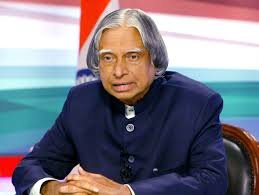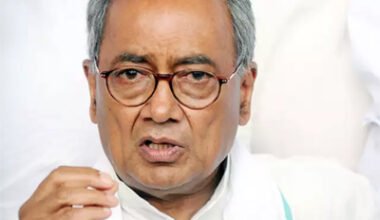Dr Apj Abdul Kalam Biography
Dr. Avul Pakir Jainulabdeen Abdul Kalam, popularly known as APJ Abdul Kalam, was an Indian aerospace scientist who served as the 11th President of India from 2002 to 2007. Widely referred to as the “People’s President” and the “Missile Man of India,” Dr. Kalam’s life journey from a humble background to the highest office of the country is an inspiration to millions. This comprehensive biography delves into his early life, education, illustrious career, family background, and his lasting impact on Indian science, technology, and society.
Date of Birth and Early Life
Dr. APJ Abdul Kalam was born on October 15, 1931, in Rameswaram, a small town in the state of Tamil Nadu, India. He was born into a Tamil Muslim family and was the youngest of five siblings. His birth coincided with a time when India was still under British colonial rule, and the country was on the cusp of significant social and political changes.
Childhood in Rameswaram
Rameswaram, a pilgrimage town known for its ancient Ramanathaswamy Temple, played a crucial role in shaping young Kalam’s worldview. The town’s multi-religious environment, with Hindus and Muslims living in harmony, instilled in him a deep sense of respect for all faiths and cultures.
Kalam’s father, Jainulabdeen, was a boat owner and imam of the local mosque. His mother, Ashiamma, was a homemaker. Despite their modest means, Kalam’s parents emphasized the importance of education and spiritual values.
As a child, Kalam was fascinated by the flight of birds, a curiosity that would later influence his career choice. He often spent hours on the shores of Rameswaram, watching seagulls and pelicans soar over the waters of the Bay of Bengal.
Early Influences
Two individuals profoundly influenced Kalam during his formative years:
- Iyadurai Solomon: His science teacher at Schwartz High School, recognized Kalam’s potential and encouraged his curiosity about the natural world.
- Ahmed Jallaluddin: A relative who introduced young Kalam to the wonders of science and the importance of spirituality.
These early influences played a significant role in shaping Kalam’s character, combining scientific temper with spiritual wisdom – a trait that would define his approach to life and work in the years to come.
Education
Dr. APJ Abdul Kalam’s educational journey is a testament to his perseverance, intellectual curiosity, and dedication to learning. His academic path laid the foundation for his future contributions to science and technology.
Early Education
- Elementary Education: Kalam began his formal education at Rameswaram Elementary School. Even at this young age, he showed a keen interest in mathematics and science.
- Schwartz High School: For his secondary education, Kalam attended Schwartz High School in Ramanathapuram. It was here that his love for science blossomed under the guidance of his teacher, Iyadurai Solomon.
Higher Education
- St. Joseph’s College, Tiruchirappalli: After completing his schooling, Kalam enrolled at St. Joseph’s College, which was affiliated with the University of Madras. He pursued a degree in Physics, graduating in 1954.
- Madras Institute of Technology (MIT): Kalam’s passion for aeronautics led him to join MIT in 1955 for a degree in Aerospace Engineering. This was a turning point in his life, as it set him on the path to becoming one of India’s leading aerospace scientists. During his time at MIT, Kalam worked on a senior class project to design a low-level attack aircraft. His dedication impressed the Dean, who allowed Kalam extra time to complete the project, which he did successfully.
Continued Learning
Throughout his career, Dr. Kalam continued to educate himself, staying abreast of the latest developments in science and technology. He was a strong advocate for lifelong learning, often emphasizing its importance in his speeches and writings.
Academic Achievements
- Bachelor of Science in Physics from St. Joseph’s College, Tiruchirappalli (1954)
- Diploma in Aeronautical Engineering from Madras Institute of Technology (1957)
- Doctorate of Science (Honoris Causa) from multiple universities worldwide
Dr. Kalam’s educational journey was not just about acquiring degrees but about cultivating a mindset of continuous learning and innovation. This approach would serve him well in his illustrious career spanning decades in India’s premier scientific institutions.
Career
Dr. APJ Abdul Kalam’s career is a remarkable journey through India’s scientific and technological landscape, culminating in the highest office of the country. His contributions span aerospace engineering, missile technology, and national development.
Early Career in Aerospace (1960s)
- Defence Research and Development Organisation (DRDO): After graduating from MIT, Kalam joined the DRDO as a senior scientific assistant in 1958. His first project was to develop a small hovercraft.
- Indian Committee for Space Research (INCOSPAR): In 1962, Kalam was transferred to the newly formed INCOSPAR, which later became the Indian Space Research Organisation (ISRO).
ISRO Years (1960s-1970s)
At ISRO, Kalam played a crucial role in several projects:
- SLV-III Project: As the project director, Kalam led the development of India’s first indigenous Satellite Launch Vehicle (SLV-III). The successful launch of the Rohini satellite in 1980 using SLV-III marked India’s entry into the space club.
- Satellite Development: He contributed to the development of ISRO’s satellite program, working on projects like Aryabhata, India’s first satellite.
Missile Development Program (1980s-1990s)
Kalam returned to DRDO in 1982 to lead India’s integrated guided missile development program:
- Agni and Prithvi: He was the chief architect of these ballistic missile systems, which formed the backbone of India’s nuclear deterrence strategy.
- Project Devil and Project Valiant: These projects are aimed at developing ballistic missiles using technologies developed for the SLV program.
Scientific Advisor to the Government (1990s)
- Chief Scientific Adviser: In 1992, Kalam was appointed as the Chief Scientific Adviser to the Prime Minister and the Secretary of the DRDO.
- Pokhran-II Nuclear Tests: He played a crucial role in India’s 1998 nuclear weapons tests, which established India as a nuclear state.
Presidency (2002-2007)
In 2002, Dr. Kalam was elected as the 11th President of India, a role he served in until 2007. As President, he focused on:
- Interaction with Youth: He conducted numerous interactions with students, inspiring them to dream big and work towards national development.
- Vision 2020: Kalam proposed a comprehensive plan to transform India into a developed nation by 2020, focusing on agriculture, technology, infrastructure, and education.
- Bridging the Rural-Urban Divide: He emphasized the need for balanced development between rural and urban India.
Post-Presidency
After his term as President, Dr. Kalam returned to his passion for teaching:
- Visiting Professor: He took up teaching roles at various prestigious institutions including IIM Ahmedabad, IIM Indore, and IIM Shillong.
- Writing and Public Speaking: Kalam authored several books and became a popular public speaker, continuing to inspire youth across the nation.
Awards and Honors
Throughout his career, Dr. Kalam received numerous awards, including:
- Padma Bhushan (1981)
- Padma Vibhushan (1990)
- Bharat Ratna (1997) – India’s highest civilian honour
Dr. APJ Abdul Kalam’s career is characterized by his contributions to India’s defence and space programs, his visionary leadership, and his dedication to inspiring the youth of India. His journey from a small town in Tamil Nadu to the highest office in the country stands as a testament to his brilliance, perseverance, and commitment to national development.
Family
Dr. APJ Abdul Kalam came from a humble family background, which played a significant role in shaping his values and outlook on life. His family history is rooted in the coastal town of Rameswaram, Tamil Nadu.
Parents
- Father: Jainulabdeen
- Occupation: Boat owner and imam of the local mosque
- Known for his wisdom and spiritual nature
- Instilled in Kalam the values of honesty, integrity, and self-discipline
- Mother: Ashiamma
- Occupation: Homemaker
- Known for her kindness and generosity
- Taught Kalam the importance of empathy and compassion
Siblings
Dr. Kalam was the youngest of five siblings:
- Mohammed Muthu Meera Lebbai Maraikayar (Eldest brother)
- Mustafa Kamal (Elder brother)
- Kasim Mohammed (Elder brother)
- Asim Zohra (Only sister)
Extended Family
While Dr. Kalam never married and did not have children of his own, he maintained close relationships with his extended family:
- Nephews and Nieces: He took a keen interest in their education and careers
- APJMJ Sheik Saleem: His grand-nephew, who often accompanied him during public appearances
Family Values
The Kalam family, despite their modest means, placed a high value on education and ethical living. These early influences significantly shaped Dr. Kalam’s character:
- Interfaith Harmony: Growing up in a predominantly Hindu town, Kalam’s family exemplified religious tolerance and respect for all faiths.
- Simplicity: The family led a simple life, which instilled in Kalam a lifelong habit of living modestly, even when he held high offices.
- Pursuit of Knowledge: His parents encouraged his academic interests, often making sacrifices to support his education.
- Service to Society: The family’s involvement in community affairs inspired Kalam’s lifelong commitment to social service.
Impact on Career
Dr. Kalam often credited his family background for his success:
- Work Ethic: He attributed his strong work ethic to the example set by his father.
- Spiritual Outlook: His mother’s spiritual nature influenced his holistic approach to science and life.
- Curiosity: The diverse environment of Rameswaram and his family’s encouragement nurtured his curiosity about the world.
Later Years
Even after achieving national and international recognition, Dr. Kalam maintained close ties with his family and hometown:
- Regular Visits: He often visited Rameswaram and his ancestral home.
- Family Support: His family, particularly his elder brother A.P.J.M. Maraikayar, managed his affairs in Rameswaram.
- Legacy: After his passing, his family has been involved in preserving his legacy through various initiatives and the maintenance of his memorial in Rameswaram.
Dr. Kalam’s family background, characterized by simplicity, strong values, and a supportive environment, played a crucial role in shaping the man who would go on to inspire millions and lead India in various capacities. His life story serves as a powerful reminder of the impact a nurturing family can have on an individual’s growth and contributions to society.
Net Worth
Assessing Dr. APJ Abdul Kalam’s net worth is a complex task, primarily because he led a life of simplicity and dedicated most of his earnings to charitable causes. However, we can examine various aspects of his financial status and contributions:
Salary and Earnings
- Government Service:
- As a scientist in DRDO and ISRO, Kalam earned a government salary for most of his career.
- His earnings increased as he rose to higher positions like Scientific Advisor to the Defence Minister and Chief Scientific Adviser to the Prime Minister.
- Presidential Salary:
- As the President of India (2002-2007), he received a monthly salary, which at that time was approximately ₹50,000 per month.
- He was also entitled to various allowances and post-retirement benefits.
- Post-Presidency:
- After his term as President, Kalam took up teaching positions at various institutions, which provided him with a modest income.
- He was also a popular speaker at various events, though he often spoke for free, especially at educational institutions.
Book Royalties
Dr. Kalam authored several books that became bestsellers:
- “Wings of Fire: An Autobiography” (1999)
- “India 2020: A Vision for the New Millennium” (1998)
- “Ignited Minds: Unleashing the Power Within India” (2002)
- “The Luminous Sparks” (2004)
- “Mission India” (2005)
- “Inspiring Thoughts” (2007)
- “You Are Born To Blossom: Take My Journey Beyond” (2011)
- “Turning Points: A Journey Through Challenges” (2012)
The royalties from these books contributed to his income, though he often donated a significant portion to charitable causes.
Assets
- Property:
- Kalam owned few personal assets. His family home in Rameswaram was his primary property.
- He did not own any vehicles or luxury items.
- Investments:
- There is little public information about his investments, reflecting his focus on simple living.
Charitable Contributions
A significant aspect of Dr. Kalam’s financial profile was his charitable giving:
- Salary Donations:
- As President, he often donated his salary to charitable organizations.
- He was known to contribute to causes related to education and child welfare.
- Book Royalties:
- A large portion of his earnings from book royalties was donated to various charitable causes.
- Establishing Foundations:
- He was instrumental in setting up foundations to promote education and innovation, often contributing his funds.
Estimated Net Worth
Given Dr Kalam’s lifestyle and charitable nature, his net worth at the time of his passing in 2015 was estimated to be relatively modest:
- Various sources estimate his net worth to have been between $1 million to $5 million.
- However, it’s important to note that these figures are speculative, as Dr. Kalam never publicly disclosed his financial details.
Legacy of Simplicity
Dr. Kalam’s approach to personal wealth was characterized by:
- Minimalism: He owned few personal possessions and lived a simple life.
- Focus on Giving: He prioritized using his earnings for social causes rather than personal accumulation.
- Transparency: He was known for his financial integrity and transparency in all his dealings.
Dr. APJ Abdul Kalam’s net worth, while modest in financial terms, is immeasurable in terms of his contributions to science, education, and national development. His life serves as a powerful example of how one can lead a fulfilling and impactful life without accumulating vast personal wealth. His true riches lay in the respect he earned and the countless lives he inspired.
Legacy and Impact
Dr. APJ Abdul Kalam’s legacy extends far beyond his scientific achievements and presidency. His life and work continue to influence and inspire millions across India and the world. Here’s an overview of his enduring impact:
Scientific and Technological Advancements
- Missile Development: Kalam’s work on missile systems significantly enhanced India’s defence capabilities.
- Space Program: His contributions to ISRO laid the foundation for India’s robust space program.
- Nuclear Capability: He played a crucial role in establishing India as a nuclear power.
Educational Initiatives
- Vision for Education: Kalam consistently emphasized the importance of education in national development.
- Interactions with Students: His numerous interactions with students across the country inspired a generation of young Indians to pursue careers in science and technology.
- Educational Programs: He initiated several programs to improve the quality of education, especially in rural areas.
Vision for India’s Development
- India 2020: His vision document outlined a roadmap for transforming India into a developed nation by 2020.
- PURA (Providing Urban Amenities to Rural Areas): This concept is aimed at bridging the rural-urban divide through sustainable development.
- Technology for National Development: Kalam advocated for leveraging technology to solve India’s socio-economic challenges.
Leadership and Governance
- People’s President: His tenure as President of India redefined the role, making it more accessible to common citizens.
- Ethical Leadership: Kalam set high standards for integrity and ethical conduct in public office.
- Interfaith Harmony: He was a strong advocate for religious tolerance and national unity.







